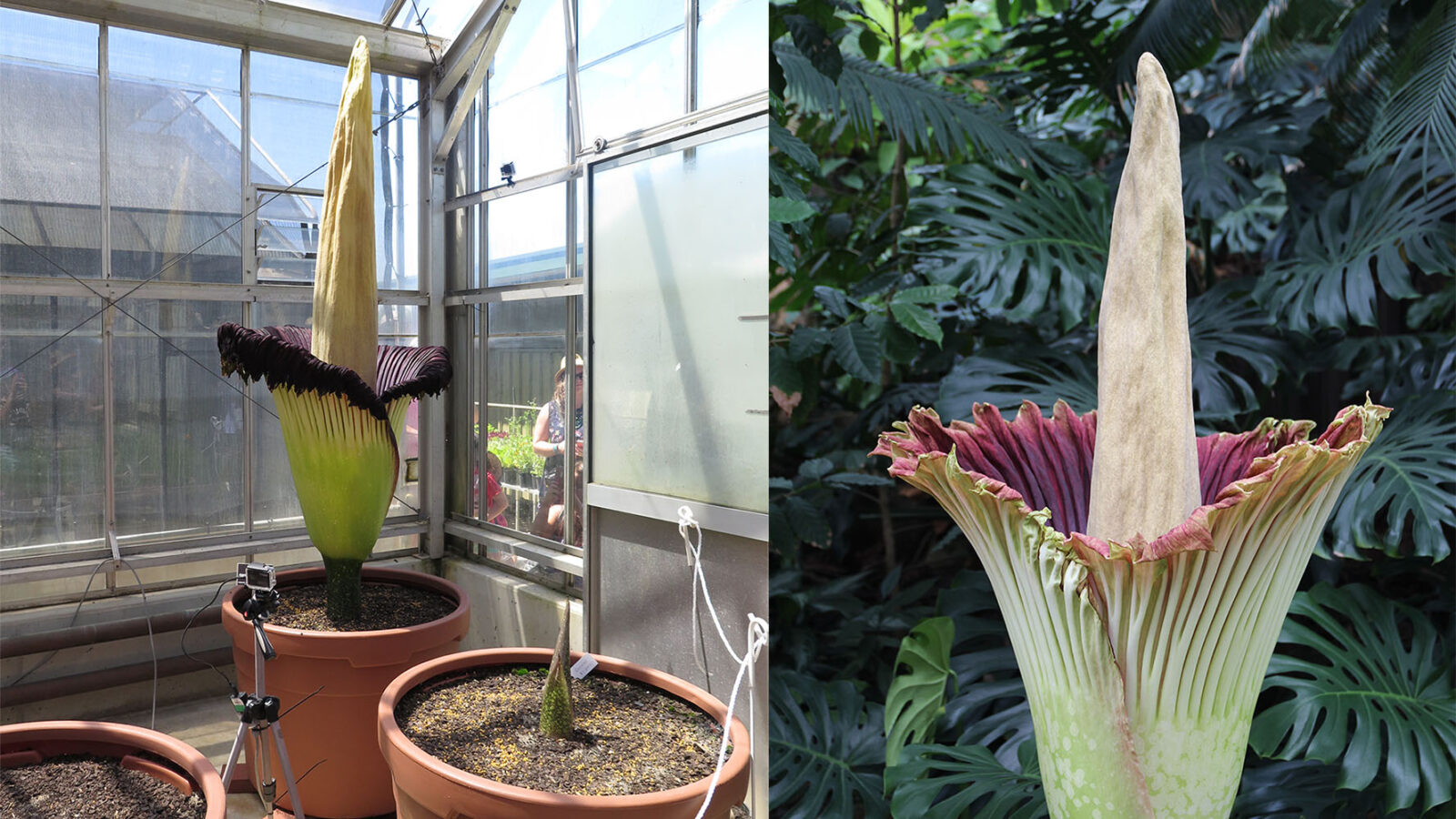It was two o’clock on a warm summer afternoon when my daughter and I turned into the road leading to the entrance of the Mt Lofty Botanical Gardens in South Australia. To our surprise, the road was crowded and we joined the queue of cars slowly inching their way forward. Fortunately, there were people leaving as well as arriving and before too long we managed to find a park on the grass beside the road. We grabbed our sunhats and walked up the hill to join the hundreds of other people who had also come to see the famed Corpse Flower.
The queue was long and the sun hot, but people were cheerful. An entrepreneurial man selling ice-blocks from an esky at an exorbitant price, was completely sold out. Groundsmen came and strategically set up a sprinkler so that it watered not just the grass beside the path, but also the crowd as they slowly moved down towards the entrance to the greenhouse. None of us minded.
The Corpse Flower or Titan arum is a native of Sumatra and difficult to cultivate. The plant we had come to see had been grown from seed and was 10 years old. This was the first time it had bloomed and it was not expected to bloom again for two to three years. The plant with its flower stood almost two metres tall and the flower was nearly one metre across. The flower only lasts for 48 hours and is at its best for just 24 hours, hence the rush of people to see it.
While spectacular to see, it is not just the flower that makes the Corpse Flower famous. It is named the Corpse Flower for good reason as it emits a noxious odour, rather like the smell of a dead animal, particularly at night and in the early morning. We were not able to detect any unusual odour, however the keeper of the plant said the smell when he opened the glasshouse in the mornings was nauseating.
We admire flowers for their beauty and perfume. In Western Australia the Boronia bush, insignificant to look at with its small leaves and bell-shaped flowers, stands out from the array of other native flowers because of its delightful perfume.
Then there is the rose, a symbol of love. A friend of mine enjoys picking bunches of roses from her garden and placing them around her home so that it is filled with their fragrance. Every rose in her garden was chosen not just for its beauty, but for its perfume too.
Daphne plants are small bushes with dark glossy green leaves. Once a year they are covered with clusters of small pink-and-white flowers which give off a distinctive sweet perfume. My mother loved Daphne but I remember her only ever having one bush, which grew in a bed of violets under my bedroom window. Each year when my bushes flower and the air around them is filled with their fragrance, I have a timeless reminder of my mother—her love, faith, patience and positive attitude towards life.
In 2 Corinthians 2:14,15 (NKJV), Paul uses the imagery of smell when talking about the influence of our lives in the world: “But thanks be to God, who . . . through us diffuses the fragrance of His knowledge in every place. For we are to God the fragrance of Christ among those who are being saved and among those who are perishing.”
Is your life a stench or a beautiful perfume to your family, friends and those with whom you mingle?
Carolyn Hankins lives with her husband in Wangaratta (Vic), where she is actively involved in her church and community. This article was based on a worship her father (Pastor Alwyn Gersbach) took and an experience she shared with her daughter.






